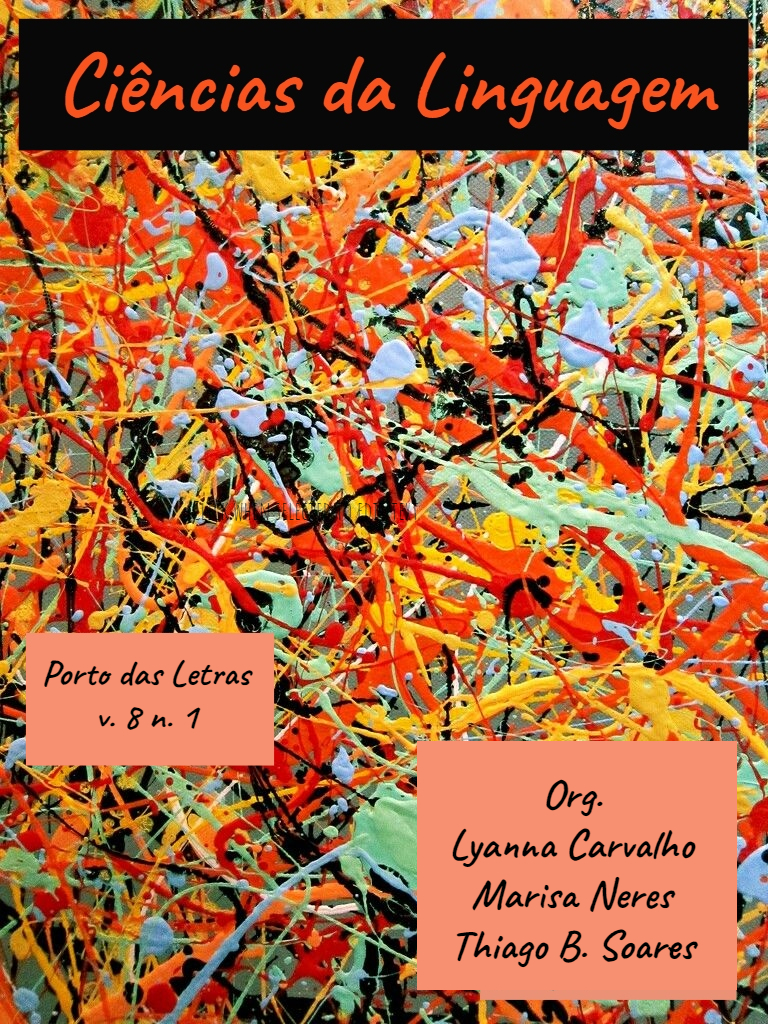A música como recurso de ensino-aprendizagem da língua inglesa nos livros didáticos
Abstract
In recent decades, much has been discussed about the different ways of teaching and learning foreign languages. In contrast to the structuralist tradition in language teaching, centered on knowledge of norms, in recent years the focus has been on communication. This new perspective prioritizes meaningful learning, considering both form and meaning in the production of utterances. It is about teaching the structure of the language in a dynamic and contextualized way, with primacy through the use of authentic materials, such as music. Songs are an effective resource of accessing linguistic content in a playful, stimulating and contextualized way. In addition to providing a relaxed atmosphere, they are real language samples that can be used to develop grammatical knowledge, vocabulary, pronunciation, listening and linguistic variation, for example. This exploratory study aims to contribute to the literature on the subject, investigating how lyrics are approached in textbooks, since they are elementary teaching materials.
References
______________________. Linguística aplicada – ensino de línguas e comunicação. Campinas: Pontes, 2005.
AMOS, E.; CONDI, R. Peacemakers. São Paulo: Richmond Educação, 2018. Disponível em: < https://pt.calameo.com/read/002899327112d3fd014da?authid=kPdPv5rUTkes>. Acesso em 17 jun. 2021.
BATSTONE, Rob. Grammar. Oxford: Oxford University, 1994.
CANALE, M. From communicative competence to communicative language pedagogy. In: RICHARDS, J.; SCHMIDT, R. Language and communication. London: Longman, 1983, p. 2-27.
COSTA, E.G.M.; FREITAS, L.M.A.; NEVES, R. (Org.). Beyond Words. São Paulo: Richmond Educação, 2018. Disponível em: < https://pt.calameo.com/read/0028993271420eca8ba38?authid=nk3NA3QGeRBJ>. Acesso em 17 jun. 2021.
DA LUZ, D.S.B. A música como instrumento de aprendizagem nas aulas de espanhol como língua estrangeira. Roraima: Norte Científico, 2009, v.4, n.1. p.51-60).
FRANCO, C; TAVARES, K. Way to english for Brazilian learners. São Paulo: Ática, 2018. Disponível em: < https://saber.com.br/obras/PNLD/PNLD_2020/WAY_TO_ENGLISH/6ANO/PNLD20_Way_to_English_6ano_PR.pdf >. Acesso em 17 jun. 2021.
HOLDEN, S., ROGERS, M. O ensino da língua inglesa. São Paulo: SBS, 2001.
KAWACHI, C.J. A música como recurso didático-pedagógico na aula de língua inglesa da rede pública de ensino. Dissertação de Mestrado, Universidade Estadual Paulista "Júlio de Mesquita Filho" (UNESP), Araraquara, 2008.
KRASHEN, S. Principles and practice in second language acquisition. Oxford: Pergamon, 1982.
LACOMBE, I.A. et al. Become: 6º ano. São Paulo: FTD, 2018. Disponível em: < https://pnld2020.ftd.com.br/colecao/become/>. Acesso em 17 jun. 2021.
LARSEN-FREEMAN, D. Teaching Grammar. In CELCE-MURCIA, M. (Ed.) Teaching English as a Second or Foreign Language. (3rd Edition). Boston: Heinle & Heinle, 2001, p. 251-266.
_____________________. Teaching Language From Grammar to Grammaring. Canada: Ed.Thomson Heinle, 2003.
NULMAN, D. Teaching Grammar in Context. In: ELT Journal. v. 52/2, Oxford University Press, 1998. P. 101-109.
SCHOEPP, K. Reasons for Using Songs in the ESL/EFL Classroom. In: The Internet TESL Journal, Vol. VII, No. 2, 2001.
VERCEZE, R.M.A.N.; SILVINO, E.F.M. O livro didático e suas implicações na prática do professor nas escolas públicas de Guajará-Mirim. In: Práxis Educacional, v.n.4, 2008.
WEIGEL, A.; RESCHKE, A. (Org.). English and more!. São Paulo: Richmond Educação, 2020. Disponível em: < https://pt.calameo.com/read/002899327934f25c61ec2?authid=uQOMiAkXsS5b>. Acesso em 17 jun. 2021.
Downloads
Published
How to Cite
Issue
Section
License
Os autores concordam com os termos da Declaração de Direito Autoral, que se aplicará a esta submissão caso seja publicada nesta revista (comentários ao editor podem ser incluídos a seguir).

